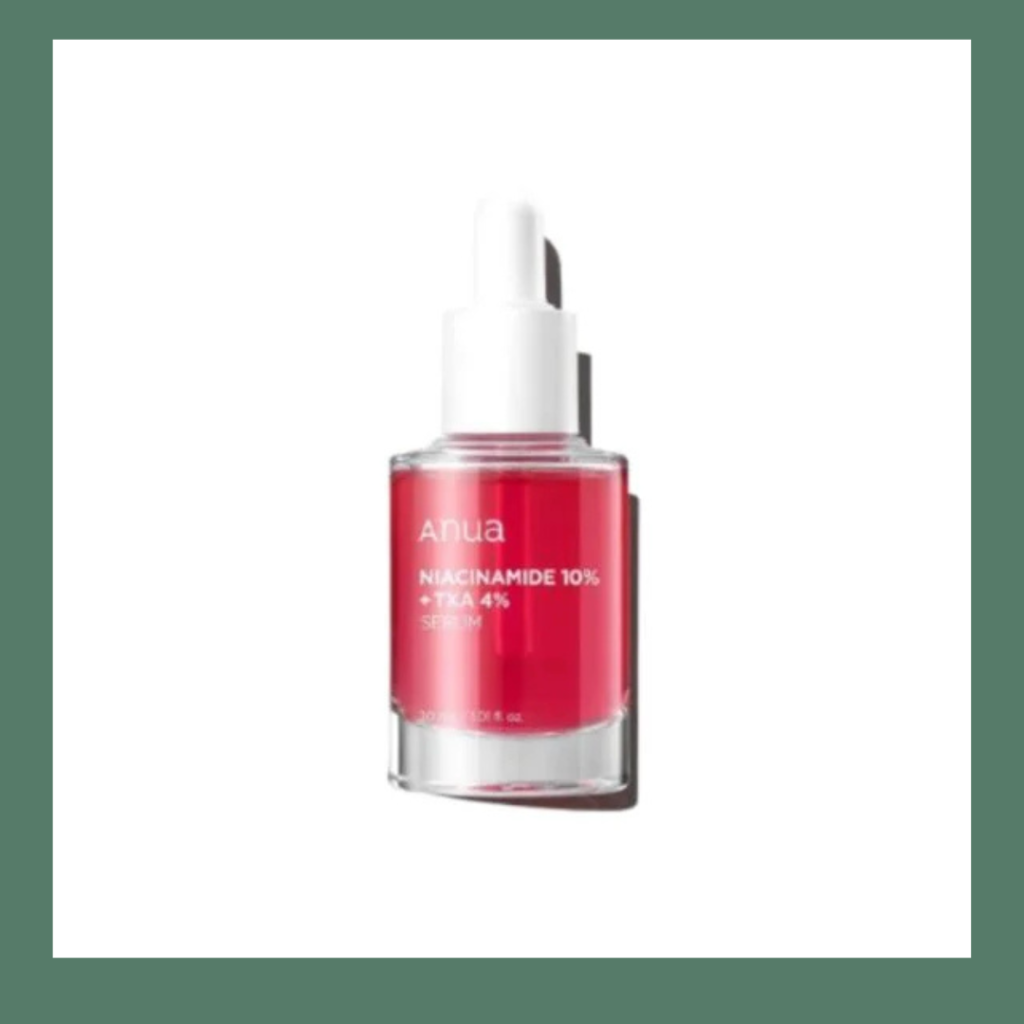Medical Melasma Treatment in Brisbane at Pearl Medispa
Pico Laser for Melasma, Tranexamic Acid for Melasma, Hydroquinone for Melasma
Melasma is a challenging pigmentation condition that requires a multifaceted approach for effective management. At Pearl Medispa, we prioritise medical treatment over standalone options like the Cosmelan peel, offering more cost-effective, customisable, and rejuvenating solutions. Our team combines hydroquinone, tranexamic acid, and pico laser for melasma with tailored chemical peels, skincare, and LED light therapy to achieve optimal results while improving overall skin health. Cosmelan and usual chemical peels are only effective against superficial melasma. Medical treatment and pico laser can achieve lightening of deep melasma, although the total clearance of long-standing melasma is impossible.
Melasma Treatment Prices
Hydroquinone, Tretinoin Cream: $140 (Superficial + Deep)
Vitamin A Peel: $176 (Superficial + Deep Melasma Treatment)
Tranexamic Acid Delivery via Tixel: $599 (Superficial + Deep)
Pico Laser for Melasma: $299 (Superficial + Deep)
Anua Niacinamide 10% + TXA 4% Dark Spot Correcting Serum, $50 (Superficial)
Cosmelan Peel Ballpark Cost: $1500 – $2200 (Superficial) * Not offered in clinic
Free Consultation with our Laser Therapist, Nurse Christine
Book an initial consultation with our laser therapist, Nurse Christine. She will assess your skin and be able to tell you what is the best approach for your particular concern. She will be able to refer you to our doctors if necessary. Please call 07 3350 5447 or book online.
Laser Therapist Nurse Christine
Christine performs laser and light treatments, beginning with a skin assessment to develop treatment plans to address various cosmetic skin concerns, such as skin tightening, tone brightening for pigmentation and facial redness, laser rejuvenation for photodamage, and picotoning.
Christine collaborates with our cosmetic doctors and facial therapists to obtain optimal aesthetic outcomes for you. Christine is trained in Pico laser and CO2 laser, BBL intense pulsed light, Tixel, HIFU, microneedling, a full range of peels, facials, and LED. She also advises on skincare for a full range of skin concerns. If required, she will organise an appointment with our doctors.
Free Consultation with our Laser Therapist, Nurse Christine
Book an initial consultation with our laser therapist, Nurse Christine. She will assess your skin and be able to tell you what is the best approach for your particular concern. She will be able to refer you to our doctors if necessary. Please call 07 3350 5447 or book online.
Why Choose Medical Treatment for Melasma?
- More Effective Results:
Medical treatments provide superior outcomes to single-treatment methods like the Cosmelan peel, addressing melasma at multiple levels. - Cost-Effective:
Combining treatments such as hydroquinone, tranexamic acid, Tixel, and Vitamin A peels offers long-term benefits at a lower cost than repeated standalone peels. - Rejuvenating Benefits:
Beyond reducing pigmentation, medical treatments improve skin texture, tone, and health. - Minimal Downtime:
Options like vitamin A peels and tranexamic acid delivered via Tixel provide effective results with reduced recovery time compared to cosmelan peels.
Our Comprehensive Melasma Treatment Plan
Hydroquinone and Tretinoin Cream:
This combination continues to be the most effective method for treating melasma, as it lightens pigmentation and boosts cell turnover to address the underlying causes of discolouration. $140
- Considered essential—first step.
- Can achieve considerable clearing by itself
- Takes weeks to months
- Cannot be used for longer than 3 months, before one month break is required
- Advise using other pigment inhibitors in the month holiday.
Vitamin A Peels:
- Price: $176
- It is a gentle and effective option to exfoliate the skin, boost renewal, and reduce pigmentation.
- A series of peels for clearance. Packages are available to reduce costs.
- Suitable for all skin types except very sensitive.
- It repairs skin barriers and reduces inflammation compared to cosmelan peel, an inflammation-causing peel.
Tranexamic Acid Delivered via Tixel:
- Price: $599
- Tixel technology enhances the penetration of tranexamic acid, addressing deep pigmentation while minimising risks.
- Tranexamic acid oral is the most effective for settling melasma; however, there are significant side effects, and utilising transdermal drug delivery provides effective delivery.
Pico Laser Treatment for Melasma
The Pico laser is a cutting-edge solution for melasma. It targets pigmentation with minimal heat, reducing the risk of post-inflammatory hyperpigmentation (P.I.H.).
- $299 per full face
- Requires 4-6 treatments
- Not considered first-line treatment.
Home Care Serums
Tranexamic Acid, Niacinamide Serum, Arbutin, Vitamin C:
We recommend advanced formulations such as Anua Tx & Niacinamide Serum $55 per 30 ml or SKIN 1004 Tone Brightening to inhibit melanin production and reduce inflammation.
LED Therapy:
Combined with other treatments LED light helps to soothe skin, reduce inflammation, and enhance healing.
- The power of LED is underestimated.
- Red and infrared light therapy is very effective for settling the inflammation that underlies melasma.
Sun Protection:
- Committing to daily sun protection, including hats, umbrellas, and sun avoidance in peak times is essential.
- Daily SPF 50+ essential part of the treatment plan
- Iron oxide sunscreen best shields the skin from blue light and UV radiation.
- Daily sunscreen use also helps prevent recurrence and protects treatment results.
Pico Laser Treatment for Melasma
Pico Lasers:
Picosecond lasers are our preferred method for treating melasma. They have become a highly effective solution, offering significant advantages over traditional laser therapies for this challenging pigmentation condition. Pico laser treatment for melasma delivers precise results while minimising (but not eliminating) risks. It targets melanin with ultra-fast pulses that minimise heat, reducing the risk of post-inflammatory hyperpigmentation. It is especially effective for melasma on the face in all skin types, including darker tones.
Why Choose Pico Laser for Melasma?
- Ultra-Short Pulses for Precision:
- Pico lasers deliver laser energy in picoseconds (trillionths of a second), creating a unique photoacoustic effect.
- These ultra-short pulses shatter melanin into tiny particles, which the body naturally eliminates, reducing pigmentation.
- Reduced Risk of Post-Inflammatory Hyperpigmentation (P.I.H.):
- Compared to traditional lasers, pico lasers transfer less heat to surrounding skin, significantly reducing the risk of P.I.H.—a common concern with melasma treatments.
- This minimises inflammation and skin damage, making it safer for darker skin types.
- You must still have skin preparation with combination prescriptions such as hydroquinone and tretinoin, tranexamic acid, and azelaic. Using a series of chemical peels can also clear epidermal pigmentation before laser treatment.
- Effective for Different Types of Melasma:
- Pico lasers target epidermal melasma (superficial pigmentation) and dermal melasma (deeper pigmentation).
- They also improve skin texture and tone and enhance skin’s appearance with pigmentation correction.
- Multiple wavelength options for customised care:
- Pico lasers offer various wavelengths, such as 532 nm, 755 nm, and 1064 nm, allowing treatment to be tailored to the depth and type of melasma.
How Pico Laser Treatment for Melasma Works
- Consultation:
Our laser and skin nurse performs a comprehensive skin evaluation to determine the suitability of pico laser treatment for melasma and creates a customised treatment plan. - Treatment Sessions:
- Typically, sessions 4–6 weeks apart are recommended for optimal results.
- Each session targets the melanin pigment while sparing surrounding tissue, promoting safe and effective outcomes.
- Post-Treatment Care:
- Apply sunscreen with SPF 30+ daily and avoid direct sun exposure.
- Use gentle, non-irritating skincare products to support healing.
Key Benefits of Pico Laser for Melasma
- Targeted Treatment: Safely and effectively addresses pigmentation at different depths.
- No Downtime: Mild redness or swelling may occur but resolves quickly.
- Improved Skin Quality: Enhances skin texture and tone for a radiant, youthful glow.
Important Considerations
- Results May Vary: A pico laser’s effectiveness depends on the melasma’s severity, the skin type, and the individual’s response.
- Potential Side Effects: Temporary redness, swelling, or mild discomfort may occur.
- Pretreatment with Pigment Inhibitors Essential to minimise risks of P.I.H
- Multiple Sessions Required: A series of treatments is often necessary for the best results.
Chemical Peel for Melasma
Chemical peels for melasma remain a valuable tool in reducing hyperpigmentation and improving skin tone. These treatments can effectively lighten dark patches by exfoliating the outermost layers of skin, stimulating cell turnover, and inhibiting melanin production.
How Chemical Peels Work
- Exfoliation: Removes pigmented skin cells for a brighter complexion.
- Cell turnover stimulation: encourages fresh, healthy skin cell production.
- Tyrosinase Inhibition: Reduces melanin production, preventing new pigmentation.
Benefits:
- Reduces dark patches and improves skin tone.
- Prepares skin for enhanced absorption of topical treatments like tranexamic acid for melasma.
Considerations:
Chemical peels can cause temporary redness and increased sun sensitivity, so diligent post-treatment care is essential.
Types of Peels:
- Superficial Peels:
- AHAs like glycolic, lactic, or mandelic acid for mild pigmentation with minimal downtime.
- Medium-Depth Peels:
- TCA, or Jessner’s solution for moderate pigmentation, offers dramatic results.
- Cosmelan Peel for Melasma:
- A two-step depigmenting system combining an in-office mask with a homecare regimen to target melanin pathways.
- Vitamin A Peel (prescription only) works in a unique way and can penetrate the dermis to treat deep melasma.
Advantages of Chemical Peels:
- Prepares the skin for enhanced absorption of tranexamic acid and other topicals.
- Improves overall skin tone and brightness.
At Pearl Medispa, we offer practical, long-term solutions for melasma treatment. We avoid treatments like the Cosmelan peel due to their high cost, downtime, and potential risks, including rebound pigmentation. Instead, we focus on medical-grade therapies like Vitamin A peels, which treat melasma and rejuvenate and protect the skin barrier. Here’s a detailed summary to help you understand the differences.
Chemical Peel for Melasma
Chemical peels for melasma remain a valuable tool in reducing hyperpigmentation and improving skin tone. These treatments can effectively lighten dark patches by exfoliating the outermost layers of skin, stimulating cell turnover, and inhibiting melanin production.
How Chemical Peels Work
- Exfoliation: Removes pigmented skin cells for a brighter complexion.
- Cell turnover stimulation: encourages fresh, healthy skin cell production.
- Tyrosinase Inhibition: Reduces melanin production, preventing new pigmentation.
Cosmelan Peel: High Intensity
The cosmelan peel is a two-step process to treat pigmentation such as melasma, sun damage, and age spots. While it can achieve quick results, it comes with significant drawbacks:
Downtime:
- Initial Recovery: Redness, swelling, and peeling for 7–10 days.
- Social Downtime: Skin may appear flaky, red, and irritated for at least one week.
- Deeper Peels (Dermamelan): Expect even more extended downtime of up to 14 days.
Cost: Expense: The Cosmelan peel involves a costly in-office application, and homecare products cost around $1500 – $2200, making it an expensive option considering it only clears epidermal pigmentation.
Side Effects:
- Common: Redness, dryness, tightness, and peeling.
- Less Common: Post-inflammatory hyperpigmentation (P.I.H.), hypopigmentation, or infection, particularly without diligent post-care.
Effectiveness:
- Primarily effective for superficial pigmentation (epidermal melasma).
- Results are often temporary without proper maintenance and sun protection.
- Risk of rebound melasma if the skin is not cared for meticulously.
Vitamin A Peel: Gentle, Effective, and Rejuvenating
In contrast, Vitamin A peels are a gentler yet highly effective alternative for treating melasma, with additional benefits for overall skin health:
Downtime:
- Minimal downtime, with mild redness or peeling for 1–3 days.
- It allows you to maintain daily activities without significant social interruption.
Cost:
- Affordable: At $176 per session, a series of 3–6 Vitamin A peels provides cumulative benefits at a fraction of the cost of a Cosmelan peel.
Benefits:
- Targets Hyperpigmentation: Gradually removes pigmentation while enhancing skin renewal.
- Skin Rejuvenation: Improves texture, tone, and overall radiance.
- Barrier Protection: Supports and strengthens the skin barrier, reducing the risk of P.I.H. or rebound pigmentation.
- Cost-Effectiveness: Medical treatments, including Vitamin A peels and tranexamic acid for melasma, offer comparable or superior results without the high price tag.
- Reduced Risks: The aggressive nature of the Cosmelan peel increases the likelihood of P.I.H. and rebound pigmentation, making it less desirable for long-term melasma management.
- Holistic Skin Health: Our approach focuses on gentle, cumulative treatments that treat melasma while improving skin condition and appearance.
Tranexamic acid addresses melasma through multiple mechanisms:
- Inhibits Plasmin Activity: Reduces inflammation and vascularisation associated with melasma.
- Decreases Melanin Production: Modulates melanocyte activity to prevent excess pigmentation.
Methods of Administration and Effectiveness
- Oral Tranexamic Acid:
- Effectiveness: oral TXA has shown the highest success rates, particularly in cases of refractory melasma.
- Side Effects: While effective, oral TXA can cause gastrointestinal upset and menstrual irregularities in some patients. Its pro-thrombotic properties necessitate careful screening and monitoring to ensure safety.
- Intralesional Injection and Microneedling with TXA:
- These methods involve delivering TXA directly into the affected areas.
- Effectiveness: Found to be an effective alternative to oral TXA, particularly for patients who cannot tolerate systemic side effects.
- Advantages: targeted delivery reduces systemic exposure, lowering the risk of adverse effects.
- Topical Tranexamic Acid:
- Effectiveness: Topical TXA is less effective as a standalone treatment than oral or intralesional methods.
- Combination Therapy: It can improve outcomes when combined with other cosmeceuticals, such as niacinamide, hydroquinone, or retinoids.
- Tolerability: Topical TXA is better tolerated than hydroquinone, making it a viable option for patients with sensitive skin.
Safety Considerations
While oral tranexamic acid offers significant potential for treating melanomas, its use requires careful consideration.
- Pro-Thrombotic Risk: Oral TXA can cause blood clots, so it should only be prescribed to patients without a history of thromboembolic disorders.
- Localised Delivery: Intralesional injections, microneedling, and Tixel with TXA minimise systemic risks and are increasingly popular for targeted treatment.
Key Takeaways
- Oral TXA is the most effective option for treating refractory melasma but requires monitoring for systemic side effects.
- Intralesional and microneedling delivery of TXA are effective alternatives with fewer systemic risks.
- Topical TXA is less potent but can be combined with other therapies to enhance results and offer better tolerability for sensitive skin.
Tranexamic acid represents a versatile and innovative option for treating melasma, especially when tailored to individual patient needs. Consulting with a qualified professional is essential to determining the most suitable treatment method for optimal results.
Hydroquinone cream for melasma and other forms of hyperpigmentation can significantly enhance skin-lightening results when combined with complementary treatments.
How Hydroquinone Works
Hydroquinone cream blocks the enzyme tyrosinase, which is essential for melanin production. This process reduces new pigment formation while breaking down existing melanin in the skin. For optimal results, hydroquinone is often combined with other active ingredients such as:
- Tretinoin: Enhances cell turnover to improve skin texture and fade pigmentation faster.
- Hydroquinone and Tretinoin Cream: A powerful combination therapy for addressing melasma and stubborn hyperpigmentation.
Prescription vs. Natural Alternatives
- Prescription Hydroquinone Creams: Deliver potent skin-lightening effects but require cautious use to minimise side effects.
- Natural Alternatives: Ingredients like arbutin, kojic acid, and vitamin C offer gentler options for those with sensitive skin or seeking a non-prescription approach.
Combining Hydroquinone with Other Treatments
To maximise the effectiveness of hydroquinone cream for melasma, it is often paired with additional treatments:
- Chemical Peels: Boost exfoliation and enhance pigment breakdown using agents like Jessner, TCA, or vitamin A peels.
- Pico Laser for Melasma: Target deep pigmentation and provide overall skin brightening, complementing the effects of hydroquinone.
- Tranexamic Acid Delivery:
- Tixel: Creates microchannels in the skin for deep penetration of tranexamic acid, directly addressing stubborn pigmentation.
- Microneedling: Improves absorption of topical agents while stimulating collagen production.
- Combination Therapy:
Pairing treatments like hydroquinone, tranexamic acid, and pico laser ensure comprehensive melasma care.
- Tranexamic Acid Delivery:
- Tixel: Creates microchannels in the skin for deep penetration of tranexamic acid, directly addressing stubborn pigmentation.
- Microneedling: Improves absorption of topical agents while stimulating collagen production.
- Combination Therapy:
Pairing treatments like hydroquinone, tranexamic acid, and pico laser ensure comprehensive melasma care.
Achieve Clearer Skin with Pearl Medispa
At Pearl Medispa, we combine medical treatments for melasma with advanced techniques like tranexamic acid delivery via Tixel, ensuring comprehensive care with long-lasting results. Our personalised approach is designed to lighten pigmentation, rejuvenate your skin, and prevent recurrence. Book your free consultation today to explore the best melasma treatment plan tailored to your unique needs.
Medical Treatment for Melasma
Topical Therapies for Melasma:
- Hydroquinone is a highly effective treatment for melancholy. It inhibits melanin production and effectively fades pigmentation. Typically used in 4% concentrations, it must be used cautiously to avoid irritation and should never be used continuously.
- Tranexamic Acid for Melasma: This anti-inflammatory agent inhibits melanin production and is effective for stubborn melasma when delivered via microneedling or Tixel.
- Azelaic Acid for Melasma: A gentle option for reducing inflammation and inhibiting melanin production, especially suitable for sensitive skin types.
- Retinoids: Promote cell turnover to fade pigmentation, though they can increase sensitivity to sunlight.
- Kojic Acid & Vitamin C: Both brighten skin and enhance melasma therapy effectiveness by inhibiting melanin production and protecting against UV damage.
Key Takeaways
- Cosmelan Peel: While practical for quick results, its high cost, downtime, and risk of rebound pigmentation make it less ideal for many patients. It also only addresses superficial pigmentation.
- Vitamin A Peel: offers a gentle, affordable, and effective alternative with added benefits for overall skin health.
- Combination Therapy: Combining multiple topical agents, such as hydroquinone for melasma, with retinoids and corticosteroids often deliver superior results.
- Comprehensive Care at Pearl Medispa: We tailor treatment plans to your needs, ensuring effective and lasting results with a focus on rejuvenation and barrier protection.
Advantages of Medical Treatment Over Cosmelan Peel
- Cost-effective: Medical treatments provide comparable or superior results at a lower cost over time.
- Less Downtime: Gentle methods like vitamin A peels and Tixel transdermal delivery minimise recovery periods.
- Rejuvenating Benefits: Improve overall skin health, texture, and radiance alongside pigmentation reduction.
- Customisable treatments are tailored to your skin type, melasma severity, and individual needs.
Preventing Rebound Melasma
Rebound melasma can occur if post-treatment care is not followed correctly. To maintain results:
- Use a broad-spectrum SPF 30+ sunscreen with iron oxide daily, even on cloudy days.
- Avoid prolonged sun exposure and hormonal triggers where possible.
- Adhere to prescribed maintenance regimens, including topical treatments and skincare.
Why Choose Pearl Medispa for Melasma Treatment?
- Expertise in Pico Laser: Our Laser Therapist Nurse, Christine, provides Pico laser treatment for melasma.
- Comprehensive Care: Our doctors provides consultations and prescribe for melasma and custom pigment inhibitors.
- Innovative Solutions: Advanced drug delivery methods like tranexamic acid via Tixel enhance treatment efficacy.
- Tailored Plans: Every treatment plan is customised to your skin type, melasma severity, and goals
Free Consultation with our Laser Therapist, Nurse Christine
Book an initial consultation with our laser therapist, Nurse Christine. She will assess your skin and be able to tell you what is the best approach for your particular concern. She will be able to refer you to our doctors if necessary. Please call 07 3350 5447 or book online.




